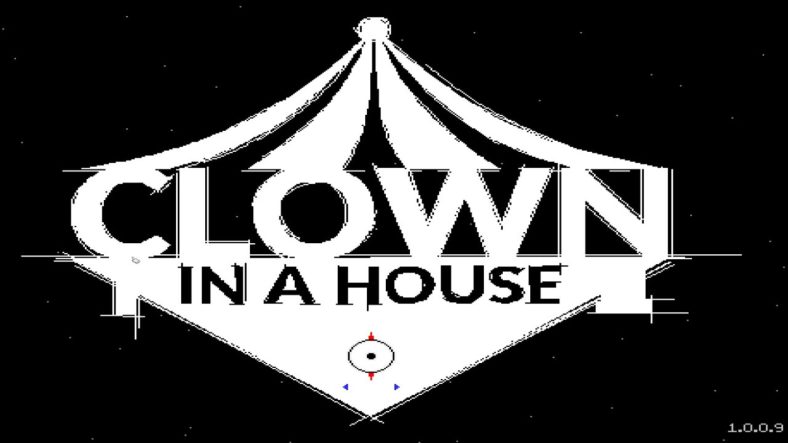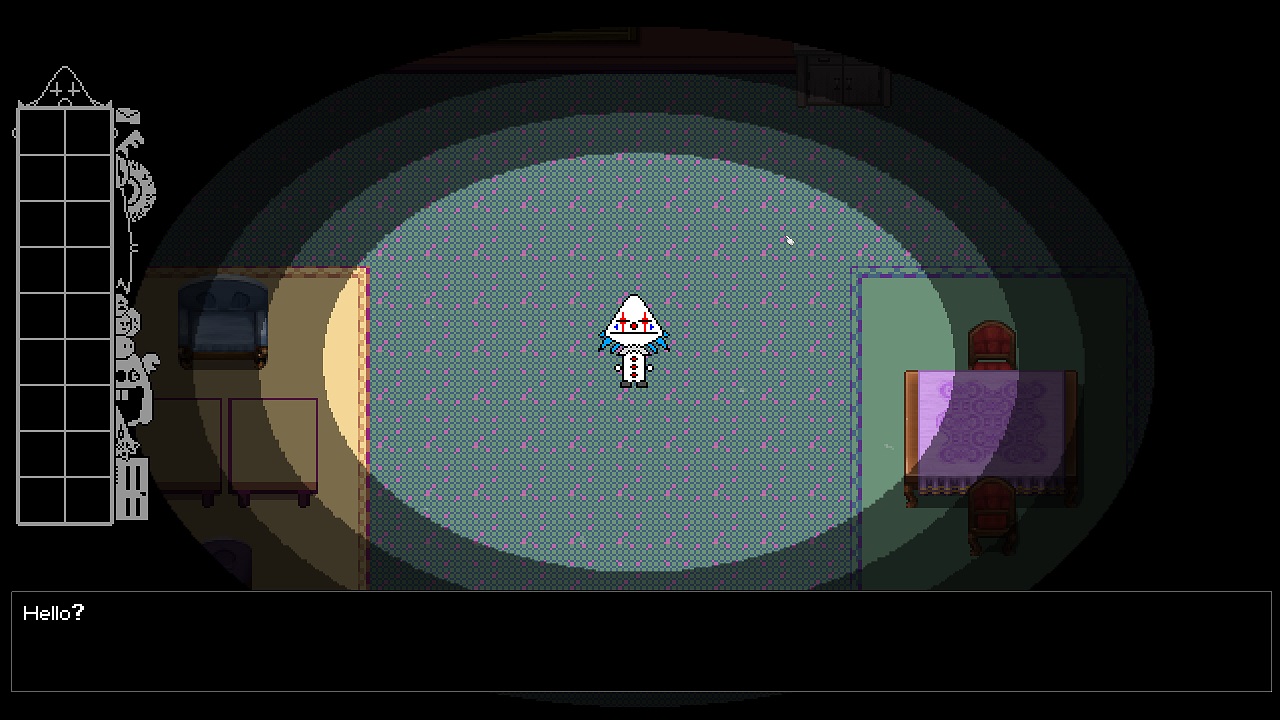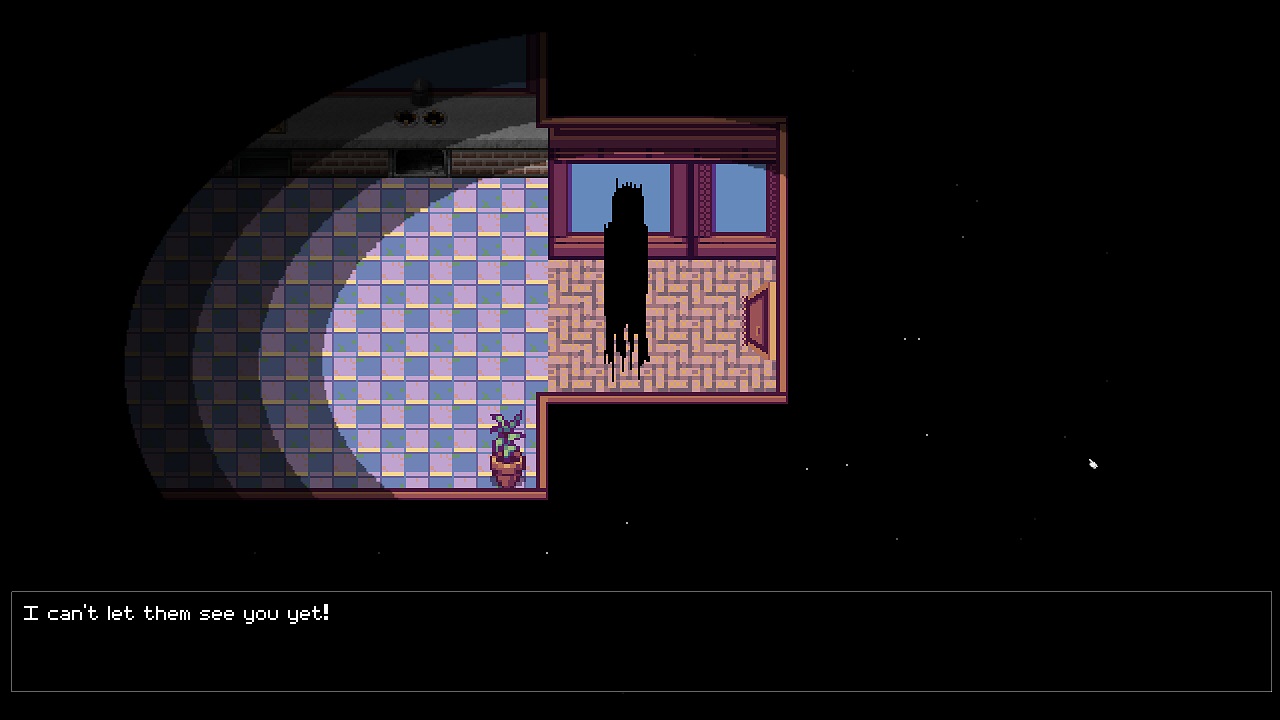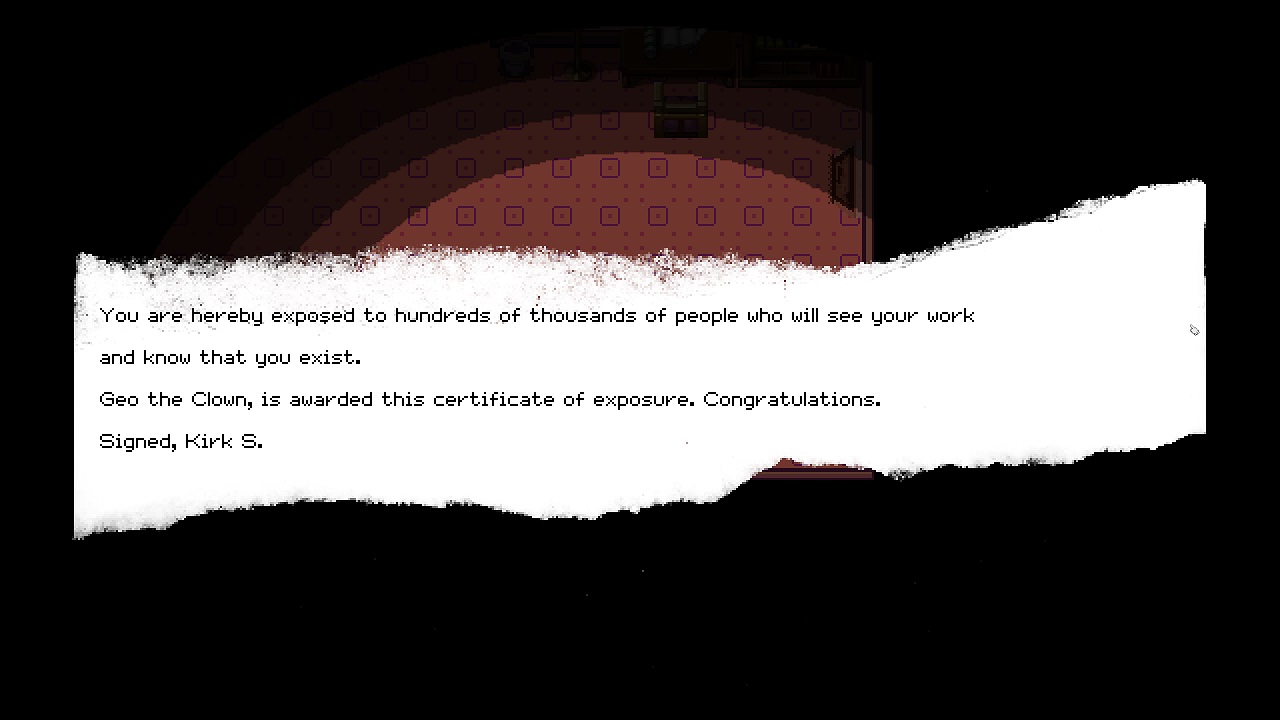Clown in A House Review – Oh, It’s an Existentialism Thing

Developed and Published by Krispy Animation
Available on PC
MSRP $7.99
Clowns are one of those primal fears. You can grow up being afraid of clowns without having a reference point for why. I think a lot of it for people my age comes from Tim Curry’s absolutely terrifying Pennywise the Clown in the IT miniseries. Clowns as a malevolent force of chaos is a pretty standard trope by now. While properties like Big Top Burger try to make clowns more appealing, we’ve got a long way to go for a complete re-imaging for clowns. Clown in A House sort of looks to change that.
You play as a clown. Just a clown. Simple stuff. You’re in a house. The title kind of covers that. It’s not revealed why exactly you’re there, but an unseen presence starts to talk to you. It’s name is Kirk and it provides running commentary throughout your time in the house. They inform you that they’re happy that you’re back, but then they immediately begin musing about how you’re not the same person they’re thinking of, but very similar. The house sits in a void. Looking out the windows you see blackness, pinpricked with stars.

You’re given free reign of the house, so long as you can figure out how to get around. Most of the doors are locked, and you’ll be solving light puzzles to find keys to get from room to room. When I say keys, I don’t specifically mean little cut pieces of metal. There are many different types of keys in Clown in A House. An early puzzle had me finding a door that was only able to be opened through the power of imagination. After a bit of futzing around I found a can of paint and a brush. Through the power of imagination, I painted a door. It was pretty terrible, – Kirk said as much – but it allowed me to enter the next room.
Lateral thinking goes a long way in Clown in A House. The puzzles aren’t exactly obtuse, but they do require a bit of thinking. When I wanted to paint a door, I found that items in your inventory cannot be combined. Kirk was helpful enough to tell me that I should find something to put the paint in. Wandering around a bit, I saw a kitchen sink. I thought, Hey, a sink could hold paint, and I was happy to find that it did. It’s obvious and not obvious at the same time. I really enjoyed the puzzles. I never got frustrated or began hunting around every interactive object hoping to find a solution.

I’m glad I didn’t do that, because almost everything can be interacted with. Each one comes with it’s own line, or multiple lines, of dialogue. The writing absolutely shines in Clown in A House. It starts out simply being a cute little escape room, but slowly starts tackling much heavier themes. I found a boulder. As I lugged it around, I found a platform perfect for a boulder. I dropped it down, and Kirk popped in to tell me that it really tied the room together, but they thought it would work better on the other platform across the room. I hauled the boulder there and they’d changed their mind, requesting that I move it again.
After moving back and forth many, many times, I started to slow down. Kirk began talking about how I just need to push through. People would love their living room, and it was all because of me and them. “Team You and Me” they said. As I slowed more they offered pizza and beer, the preferred currency of underpaid young adults needing something heavy moved. After finding out I didn’t drink, they offered me something that they said was exclusive, hard to get, and more useful than anything else. Kirk gave me a certificate of exposure. Being paid in exposure for backbreaking work felt so on point for the metaphor the game was building.

Kirk spends time ruminating on important bits about existentialism, feeling like you belong in the world, and even just how great it feels to lay in bed and not be bothered. It cuts at the small annoyances and pleasures we all face in life. I did not expect a game called Clown in A House to be this insightful. As I continued playing, I forgot that occasionally monsters would try to kill me, or that I was trying to escape a void. I wanted that next bit of sharp writing that would lampoon another daily annoyance; A text box that understood the human condition.
I’m frankly amazed at what’s there. The game can end at any time seemingly. There are 19 endings in total. Almost all of them come with some sort of text box musing about the nature of things. I’ll spoil one real quick. If you use the butcher knife on the tub, you’ll be treated to a text box explaining that you, the player, weren’t expected to do violence to a tub. If you continue to persist, Kirk will lament that they didn’t believe you capable of such a thing, before wondering out loud if expecting you to show restraint was somehow a “masturbatory reflection of the qualities they’d like to see in themself”. I persisted long enough that Kirk let me use the knife, which caused him to skin me alive, left opened up in the tub. They lamented that after opening me up to see how I worked, that I was boring. Oof.

In Clown in A House I can almost guarantee you’ll get more than you bargained for. Clear out some time to play it, and experience some of the sharpest writing I’ve ever seen in an indie game. It’s so much more than the sum of its parts, and I think you’re in for a great time. I feel a bit ridiculous saying that Clown in A House may be my game of the year so far.
Categorized:Reviews

